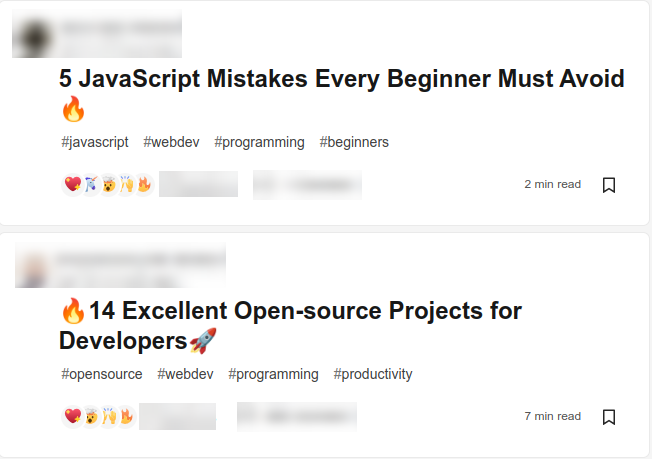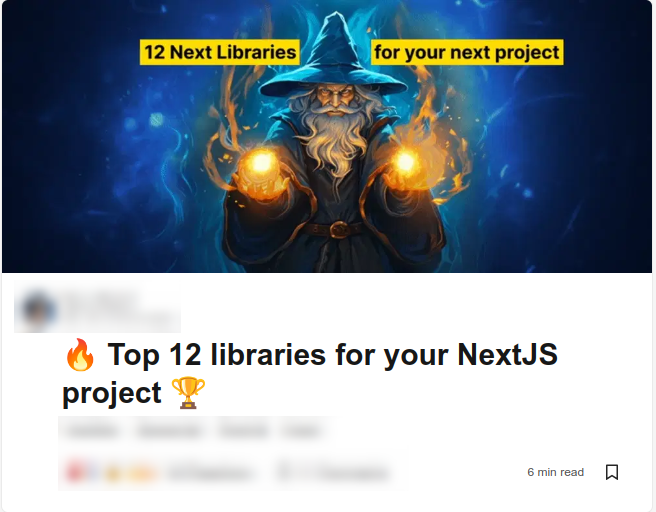Yes, the title of this post is an example of something like one of the many so called “Listicles” that have been littering the dev.to feed. With their titles full of emoji and words like “you must know” or “essential for any developer”, they entice our natural human curiosity.
Important!
Not all listicles are bad!
Follow these guidelines to create a good one:
Determine the purpose: Clearly define the purpose and objective of the listicle. What information or value are you trying to provide to the readers?
Select relevant emojis: Choose emojis that align with the content and contribute to the message you want to convey. Ensure that they are not overwhelming or distracting.
Provide meaningful content: Focus on creating informative and well-written text that provides value to the readers. The emojis should supplement the content rather than overshadow it.
Evaluate the overall impact: Before publishing, review the listicle to ensure that the use of emojis or potential clickbait text in the title enhances the reader's experience and supports the intended purpose of the article.
By following these steps, you can create a listicle that effectively incorporates as many emojis and “you must know” text as you want while maintaining the quality and substance of the content.
Essentially, they are clickbait. These post appeal to something in human nature called “FOMO”.
What is FOMO?
FOMO stands for “Fear of Missing Out.” It is a phenomenon characterized by a feeling of anxiety or unease that comes from the belief that others might be having rewarding experiences or opportunities that one is not a part of. FOMO is commonly associated with social media and the constant stream of updates and activities shared by others.
What is “Emoji Baiting”?
Another thing that these posts are exploiting is something called “emoji baiting”. This concept is only recently being explored. It involves manipulating people's emotions on social media platforms with emojis like 🤯, 🚨, 👿, and 🚀. Artificial Intelligence (AI) is an expert at this.
Why are these posts bad?
Because it is nearly impossible to find any good content!
As content creators, it's our duty to support the growth of our fellow developers in every way possible. In the comments below, let's discuss how we can accomplish this on platforms like DEV. I'd love to hear your perspective on this matter. How can we enhance the value of the DEV community and make it less overwhelming for all developers?
Remember, being an exceptional developer goes beyond having knowledge of every tool or resource available. It's about honing problem-solving abilities, fostering creativity, and embracing lifelong learning. Let's prioritize these fundamental skills, and the rest will naturally fall into place.
And, as promised, here are the 🚀 🚨 25 Reasons That “Listicles” Are BAD 👿 for dev.to 🤯 🚨. As you read the listicle, consider how it reflects what it is saying (it is, after all, a listicle itself)
Click to Expand & View List
I hope you found this article engaging! If you are interested in other things I do, check out my site:
https://the-best-codes.github.io/
Thanks for reading!
2023-12-13:
Update Note:
You may have seen some of my posts, “11 AMAZING Bookmarklets for Web Devs 🔖 🚀 (What Are They, Anyway? 🤔)”, “6️⃣ Common Browsers: How Secure are They Really? 🔒 😯”, and “10 Fun Web Development Project Ideas for Bored Coders 👍”. I believe that these are not “listicles” or clickbait, as they aren't really shallow, and they have more than just a list. If you have a different opinion about any of them, please let me know how I can improve them!





















